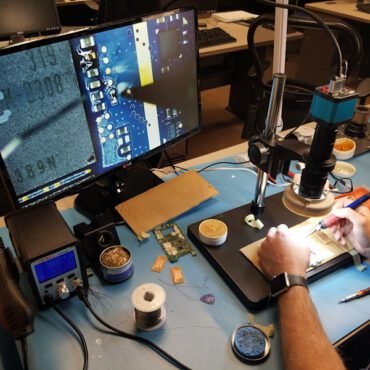In an era where data breaches, internal fraud, and cybercrimes are proliferating, corporate entities face increasing challenges in safeguarding sensitive information and ensuring ethical compliance. Digital forensics has become a vital tool for detecting, analyzing, and resolving various cyber and internal threats within organizations. This blog explores how digital forensics plays a crucial role in corporate investigations, especially concerning insider threats, employee data theft, and fraud detection.
Why Digital Forensics Matters in Corporate Investigations
Digital forensics refers to the process of identifying, preserving, analyzing, and presenting digital evidence. In a corporate context, it serves as a bridge between cybersecurity and internal audit, enabling organizations to respond effectively to incidents involving digital systems.
From employee misconduct to large-scale cyberattacks, digital forensics provides clarity by uncovering digital footprints that are otherwise invisible. It not only helps in detecting the root cause of incidents but also in ensuring compliance with regulatory requirements.
Applications of Digital Forensics in Corporate Investigations
-
Insider Threat Detection: Digital forensics tools monitor unauthorized access, suspicious downloads, and abnormal employee behavior, helping identify insider threats before they escalate.
-
Employee Data Theft: Forensic analysis can track data transfers, unauthorized email attachments, or USB activity, providing evidence of data exfiltration by employees.
-
Fraud Detection: By analyzing transaction logs, emails, and digital communications, organizations can uncover signs of internal fraud or manipulation of financial records.
-
Intellectual Property Protection: Detects attempts to copy or transfer proprietary designs, patents, or source codes to external sources.
-
Policy Violation Investigations: Helps in reviewing adherence to company policies by tracing inappropriate or unauthorized activities on corporate networks.
The Digital Forensics Process in Corporate Investigations
-
Incident Identification:
-
Evidence Preservation:
-
Data Collection:
-
Acquire data from computers, servers, email accounts, mobile devices, and cloud services.
-
Analysis:
-
Examine logs, deleted files, browser history, file access patterns, etc.
-
Use tools like EnCase, FTK, Magnet AXIOM, and X-Ways.
-
Reporting:
-
Document findings clearly and professionally.
-
Provide timelines, screenshots, and technical evidence.
-
Legal Presentation:
Benefits of Using Digital Forensics in Corporate Investigations
-
Accurate Incident Diagnosis: Allows clear understanding of what happened, when, and how.
-
Timely Response: Speeds up incident response and helps contain damage.
-
Regulatory Compliance: Ensures businesses meet data protection and cybersecurity compliance standards.
-
Reduced Downtime: Faster resolution of issues reduces operational disruptions.
-
Evidence-Based Decision Making: Supports disciplinary action or legal proceedings with concrete evidence.
Current Trends in Digital Forensics
-
Cloud Forensics: As businesses adopt cloud environments, digital forensics now extends to platforms like AWS, Azure, and Google Cloud.
-
Mobile Forensics: With smartphones becoming a primary work tool, mobile forensics is essential for retrieving messages, app logs, and location data.
-
AI and Automation: Artificial Intelligence is being integrated to automate log analysis and threat pattern recognition.
-
Live Forensics: Conducting real-time forensic analysis on running systems to prevent shutdowns or tampering.
The Challenges of Digital Forensics
-
Encryption: Strong encryption methods can limit access to data during investigations.
-
Data Volume: Analyzing terabytes of data can be time-consuming without advanced tools.
-
BYOD (Bring Your Own Device) Policies: Personal devices at work complicate legal access and privacy boundaries.
-
Cross-Jurisdictional Issues: Data stored or accessed across international borders introduces legal complexity.
Here’s How Digital Forensics Helps in Corporate Investigations:
1. Identifying the Scope of Incidents
Cybersecurity Incidents:
Internal Investigations:
-
Tracks misconduct like unauthorized data sharing or manipulation.
-
Reviews user access logs, keystrokes, and transaction histories.
Compliance:
-
Ensures investigations align with GDPR, HIPAA, or Indian IT Act.
-
Prepares organizations for legal scrutiny.
2. Uncovering Hidden Information and Evidence
Deleted Files & Data Recovery:
System Logs & Timestamps:
Encrypted or Concealed Data:
3. Supporting Legal Proceedings
Evidence Handling:
Event Reconstruction:
Prosecution Support:
4. Improving Security Posture
Preventive Insights:
Strengthening Infrastructure:
Enhancing Incident Response:
Conclusion
Digital forensics has transitioned from being a reactive solution to a proactive component of enterprise risk management. As cyber threats evolve, corporate investigations increasingly rely on forensic methodologies to protect data, ensure accountability, and strengthen digital trust.
Whether you’re dealing with insider threats, IP theft, or compliance audits, digital forensics provides the clarity and evidence needed to act decisively and legally. Organizations that embrace forensic readiness are not just prepared for the worst — they’re equipped to respond smarter, faster, and with greater confidence.





Post comments (0)